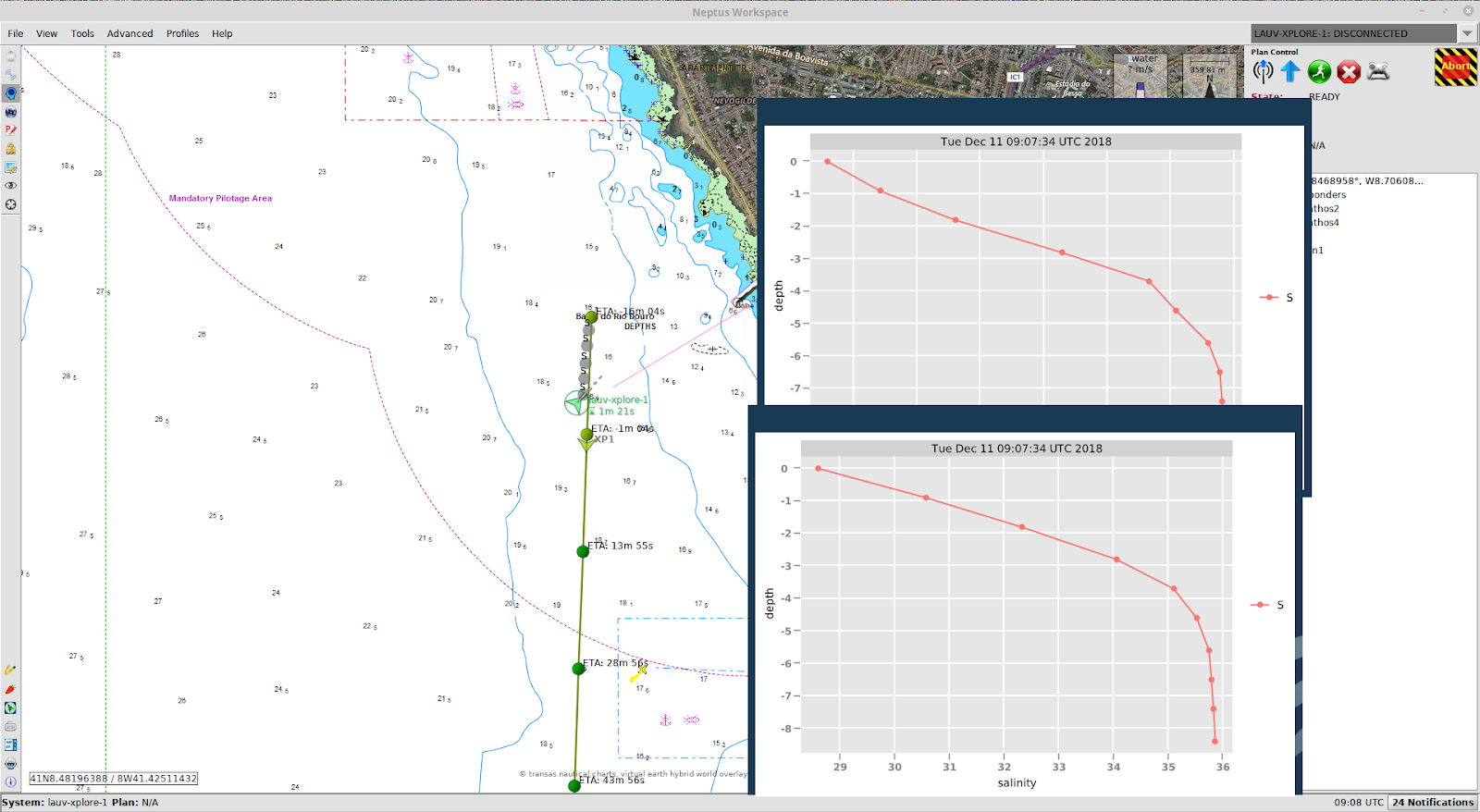Planning and Coordination of Autonomous Vehicles
Study of submesoscale ocean phenomena such as eddies, filaments and meanders requires high resolution in-situ sampling that can be addressed only via coordination of multiple assets over vast regions. Different challenges rise from this such as having communications over long distances at sea and reacting to this highly dynamic environment. As such, coordinating the actions of multiple vehicles requires a new type of framework that can endure communication and hardware faults while maintaining the operators in the loop.
Several developments have been done in the LSTS Toolchain to address these needs. The autonomous vehicles can now be supervised over Iridium satellite communications and adapt their behavior to hardware failures and environmental conditions. The planning framework consists in a set of planners which are distributed between operator console, the web and onboard the vehicles. The present and planned behaviors are shared via the web or Iridium and the execution is adapt to cope with failures. This provides a robust coordination framework which has already been put to test in the Pacific and Atlantic Oceans where multiple robots were used simultaneously to map mesoscale features.


References:
-
F. Py, J. Pinto, M. A. Silva, T. A. Johansen, J. Sousa, Rajan K. “EUROPtus: A Mixed-Initiative Controller for Multi-vehicle Oceanographic Field Experiments,” Springer Proceedings in Advanced Robotics, vol 1. Springer, 2017, pp. 323-340.
- L. Chrpa, J. Pinto, T. S. Marques, M. A. Ribeiro and J. Sousa, "Mixed-initiative planning, replanning and execution: From concept to field testing using AUV fleets," 2017 IEEE/RSJ International Conference on Intelligent Robots and Systems (IROS), Vancouver, BC, 2017, pp. 6825-6830.
